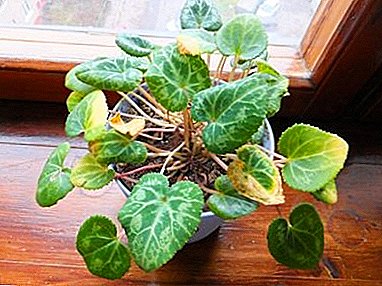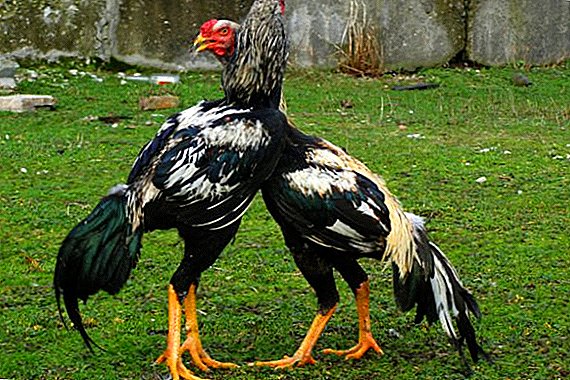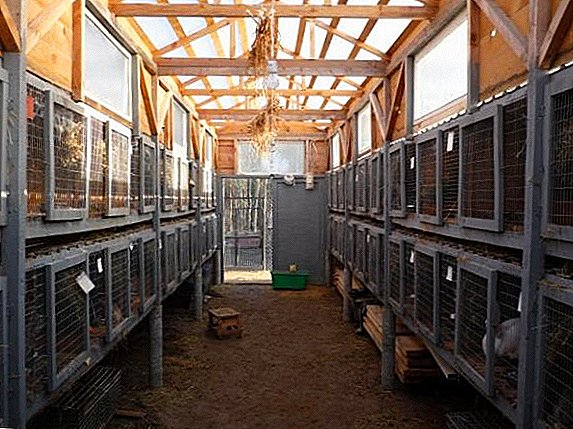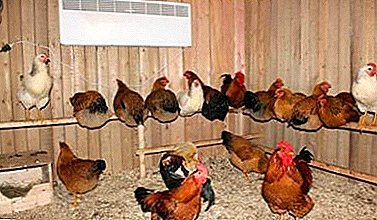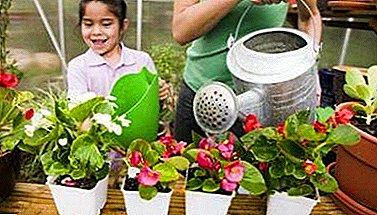
Begonia, which has a huge and bright buds, certainly pleases the eye. It is considered to be unpretentious decoration of open parks and squares, as well as apartments and house plots. In order for the plant to please the eye and periodically bloom, it is important to follow the basic rules of care, one of which is organized watering. From the article you can find out the better to water the plant, and how to do it right at home, as well as what fertilizers begonias will be needed and what to do if mistakes were made.
Features of growing and care
The main features of plant care are the following aspects that must be considered when planting and further care:
- Sanctification. The flower needs sufficiently bright lighting, especially if it will soon bloom or is in active color. It is recommended to put a flower near windows facing west or east.
- Temperature. In summer, the optimum temperature ranges from 20 to 22 degrees, and in winter, from 15 to 18 degrees. The usual temperature in the room.
- Humidity. The flower is very fond of air humidity, so it is recommended to put it on a pallet, and place it in a circle where there is expanded clay or moss, which are periodically moistened. But at the same time it is not necessary to additionally spray the plant.
- Fertilizer. It is necessary to choose mineral fertilizers for flowering indoor plants, while not containing nitrogen. Nitrogen supplements will help the leaves grow, but they will not give buds and flowers. It is necessary to use top dressing once in two weeks.
How to care for begonia at home after purchase, you can read in our article, and about the cultivation and care of begonia on the street, find here.
We offer you to watch the video about begonia care:
The importance of proper watering
Thanks to a well-organized watering system, the flower will retain a healthy look and will delight the hosts year after year with beautiful and abundant flowering. With the wrong approach to watering, the plant can dry out, get sick, or because of the high humidity of the rhizomes start to rot, then transplantation is required (how to plant begonia in the pot and how to choose the capacity, read here).
What water to use?
 Watering begonia with cold tap water should not be. Difficult in rigidity, it has a bad effect on the rhizome and plant growth. And temperature drops can cause leaves and flowers to dry. We collect water in a container and let it settle for at least 24 hours.. You can also use filtered water or use boiled water.
Watering begonia with cold tap water should not be. Difficult in rigidity, it has a bad effect on the rhizome and plant growth. And temperature drops can cause leaves and flowers to dry. We collect water in a container and let it settle for at least 24 hours.. You can also use filtered water or use boiled water.
Another way would be to use garden peat to help soften the water. 10 liters of water will have to use one kilogram of peat, which is lowered into a container in a water-permeable package, which allows water to oxidize and transfer properties to the soil.
Plant Nutrition
There are many different feedings for begonias, but basic principles should be considered when adding mineral fertilizers:
- Fertilizers will be assimilated only with high-quality care, sufficient sanctification and watering (what are the rules for caring for a flower at home?).
- To introduce fertilizer is best in the evening.
- The soil should be wet.
- The fertilizer itself should not come into contact with begonia, the chemical component can damage the plant.
- It is necessary to comply with the measure, the excess of elements will lead to sad consequences.
- Feed begonias optimally once every two weeks. In winter, it can be reduced to once a month.
Proper watering the flower in a pot at home
It is necessary to water a flower evenly, sticking to a certain time. It is preferable to water the plant in the morning. In spring and summer, watering should be abundant, otherwise the foliage will begin to fade. Regulate the frequency of watering depending on the air temperature, you can water the begonia every other day at high temperatures, or once a few days at medium temperatures.
In winter, the plant should be watered when the potted earth begins to dry. (how to keep begonia in the winter at home can be found here). The usual period between watering becomes a week. It can be watered with lukewarm water to help maintain moisture inside the soil.
Reference! Another method of watering at home will be dipping the pot in a bowl that is larger than the diameter of the pot. Immerse the pot in a container filled with softened water and wait until the earth is saturated. It usually takes about 20-30 minutes. We pull out the pot on the pallet, all the excess moisture will flow out, and the soil will remain with a sufficient amount of moisture.
Moisturizing during flowering
During flowering, the organization of watering is different from the usual watering. At this time, the plant needs strength to feed its buds, so it needs additional moisture. The best would be watering the plants once a day, settled with water. After completion of flowering, watering must be returned to the usual mode.
What to do if mistakes are made?
If before this watering was carried out incorrectly, but the plant did not have time to suffer from dry soil or was not flooded with water. You just need to go to the correct mode of irrigation, you can also do if the plant up to this point did not have enough moisture.
If before the flower had time to fill with water, then you need to transplant it into a new soil.. Pre-checking the roots, which could begin to rot. Then you need to remove the decaying areas and transplant the plant to a new place, and water the plant according to the correct pattern.
Begonia is an unpretentious plant that does not require increased attention, such as orchids. A moisture-loving plant does not survive dryness well, so you need to monitor soil moisture and its condition. Then the plant for a long time will delight you and your household with a healthy look and beautiful flowering.



